Having trouble with your iPhone 11 Pro refusing to turn on? Don’t worry, we’ve got your back! In this comprehensive guide, we’ll walk you through some practical and effective solutions to fix this frustrating issue.
Step 1: Disassemble and test
Remove the two pentalobe screws at the bottom edge and lift the screen.
After the screen is lifted, take the shielding covers off, disconnect the battery, and remove the screen.
Connect the motherboard with the Power Cable. The ammeter shows a large current of 3.1A.
Detach the motherboard and connect the motherboard with the Power Cable again. The ammeter still shows a large current of 3.1A.
It indicates that the large current has nothing to do with other flex cables. The fault is on the motherboard.
Step 2: Run diode mode measurement
Run diode mode measurement of pin 1 on the J7010 of the battery connector. The diode value is 0 which indicates that the main power supply circuit is shorted to the ground.
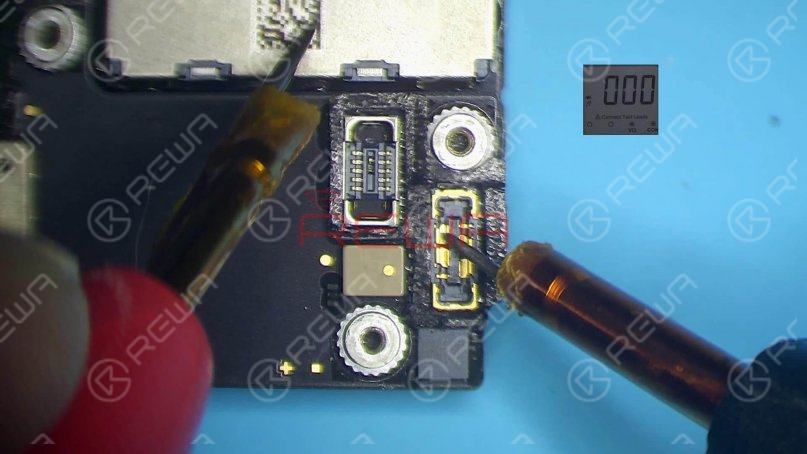
Dado que el circuito alimenta simultáneamente la placa lógica y la placa de señales, necesitamos separar la placa base para localizar el fallo.
Step 3: Motherboard separation
Remove foam on the motherboard. Then heat the back of the motherboard with Pistola de aire caliente at 240℃ to remove the shielding paper.
Coloque la placa base en el Plataforma de calefacción. To make it easier to remove the logic board after separation, drive a screw on the logic board.
Set the temperature of the Heating Platform to 185℃.
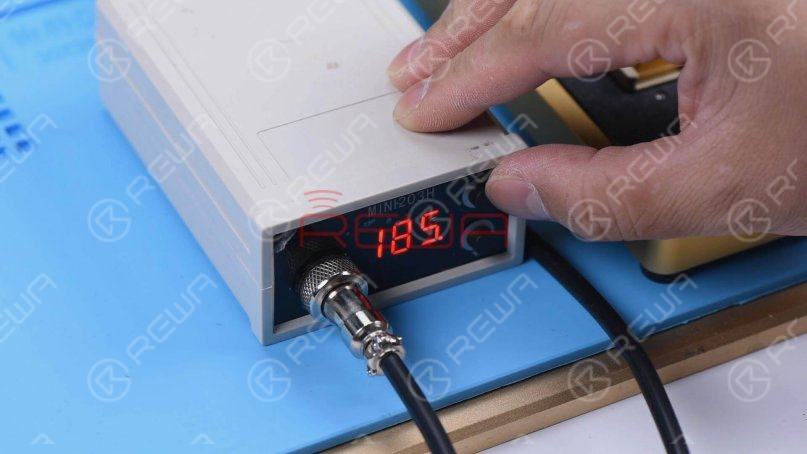
Clamp the screw to remove the logic board when the temperature has risen to 185℃. Lastly, remove the signal board.
Step 4: Run diode mode measurement again
Run diode mode measurement of pin 286 on the signal board. The diode value is 0. It suggests that the main power supply of the signal board is shorted to the ground.
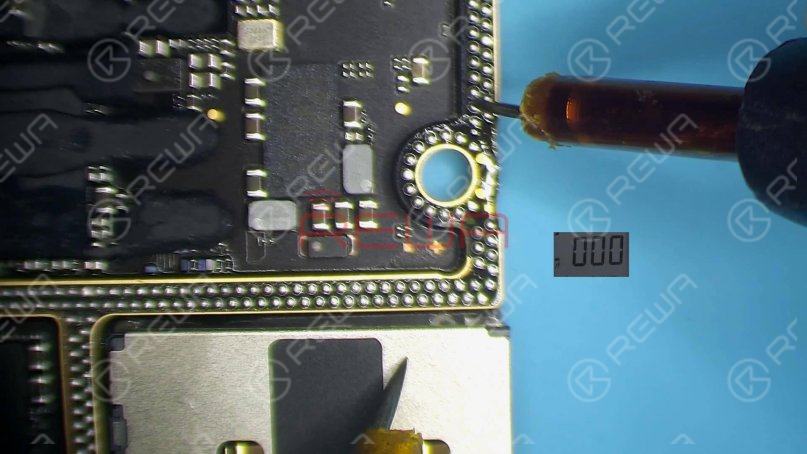
Measure pin 286 on the logic board. The diode value is 363 which means the logic board is normal.
Open the mapa de bits. We can see there are many associated components on the main power supply circuit.
Step 5: Rosin detecting to locate the fault
Next, we need to locate the faulty component with rosin detecting.Remove thermal grease with a Sculpture Knife. Then dip rosin with Soldador at 365℃ and smoke rosin on the signal board.

Set the direct current supply to 4.1V. Connect the positive and negative anode of the direct current supply with multimeter probes. Connect the black probe to the ground and connect the red probe to pin 286 on the signal board. We can see rosin on C1200_K has melted. It indicates that the capacitor is damaged.
Step 6: Eliminate the fault and restore the motherboard
Then we heat the damaged capacitor with Hot Air Gun at 350℃ and remove it with tweezers.
Limpie la colofonia de la placa de señal con PCB Cleaner. Realice una segunda medición en modo diodo. El valor del diodo vuelve a un valor normal de 327.
Smear rosin with Soldering Iron and solder wick at 365℃ to remove tin on the bonding pad. Clean the signal board with PCB Cleaner.
Remove tin and clean the logic board with the same method.Attach the signal board to the Reballing Platform and put the Reballing Stencil in position. To prevent the solder paste from flowing into the motherboard crevices, insert a metal plate. Apply a layer of low-temperature Pasta de soldar.
Remove the Reballing Stencil and put the signal board on the Heating Platform at 185℃ to heat. After the solder balls are formed, turn the power off and cool the motherboard for 5 minutes.

Aplique algunas Pasta fundente and align the logic board with the signal board. Keep heating on the Heating Platform at 185℃. When the temperature reaches 185℃, keep heating for 1 minute.This step is to ensure that the logic board and the signal board fit closely.
 Step 7: Test and assemble
Step 7: Test and assemble
Connect the motherboard with the Power Cable and short to the ground of the J7700 pin 12. The boot current becomes normal.
Put the motherboard on the phone. Connect the flex cables, screen, and battery. Because the battery is dead, plug the charging cable and the phone turns on normally.

Conclusión:
iPhone 11 Pro won’t turn on with a large current. We found that the main power supply was shorted to the ground through measuring the battery connector. The fault was found to be on the signal board after separation. Rosin detecting showed us that C1200_K was damaged. After removing C1200_K, the fault was cleared.
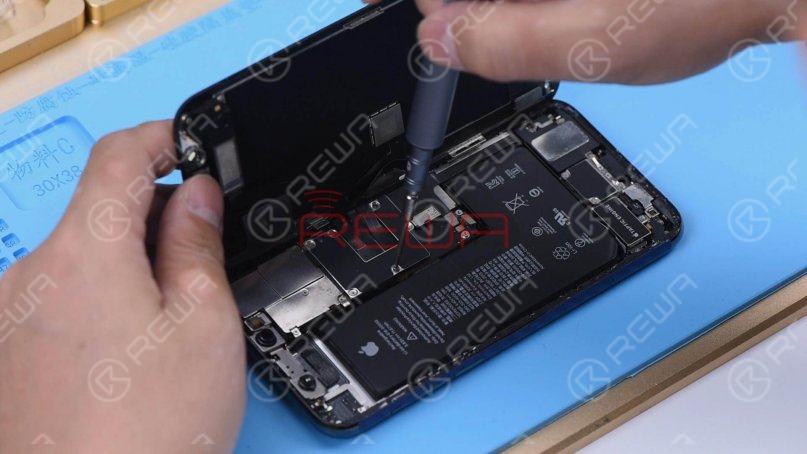

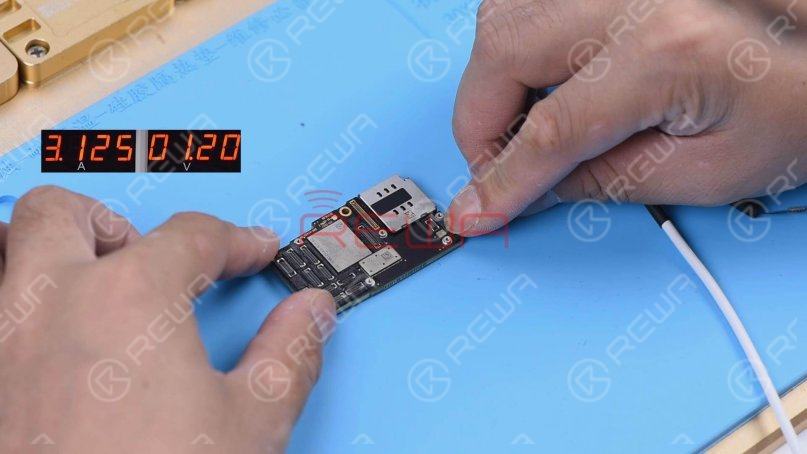

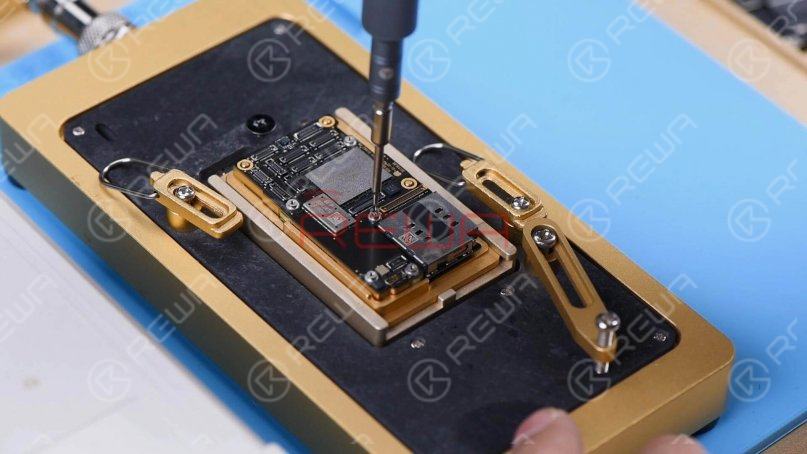


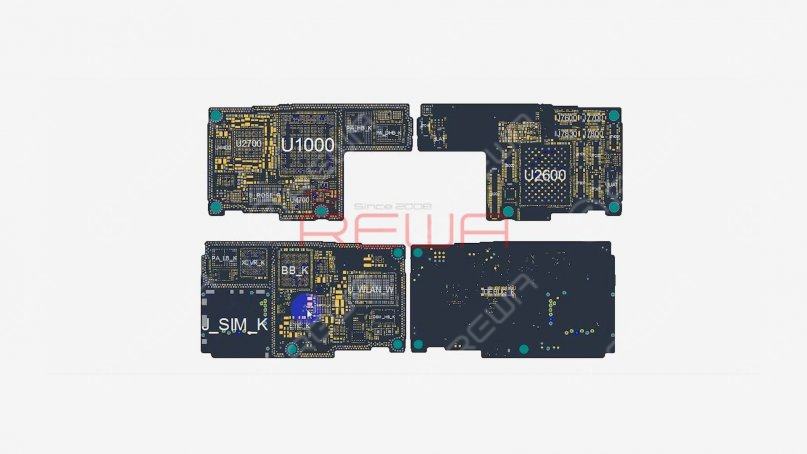

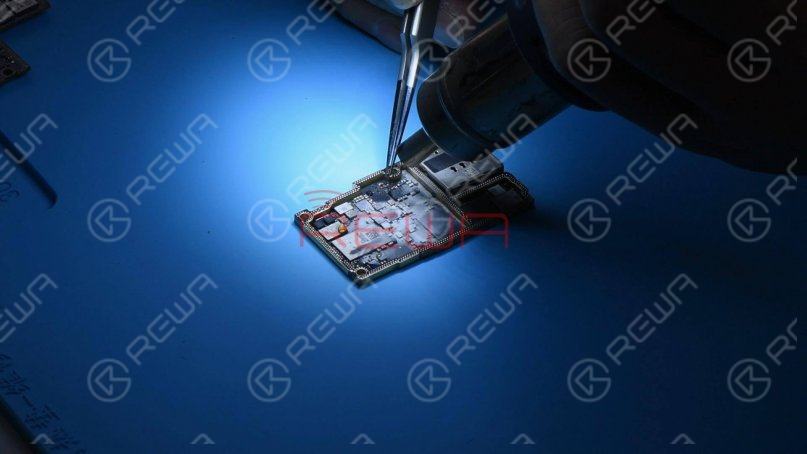



 Step 7: Test and assemble
Step 7: Test and assemble





